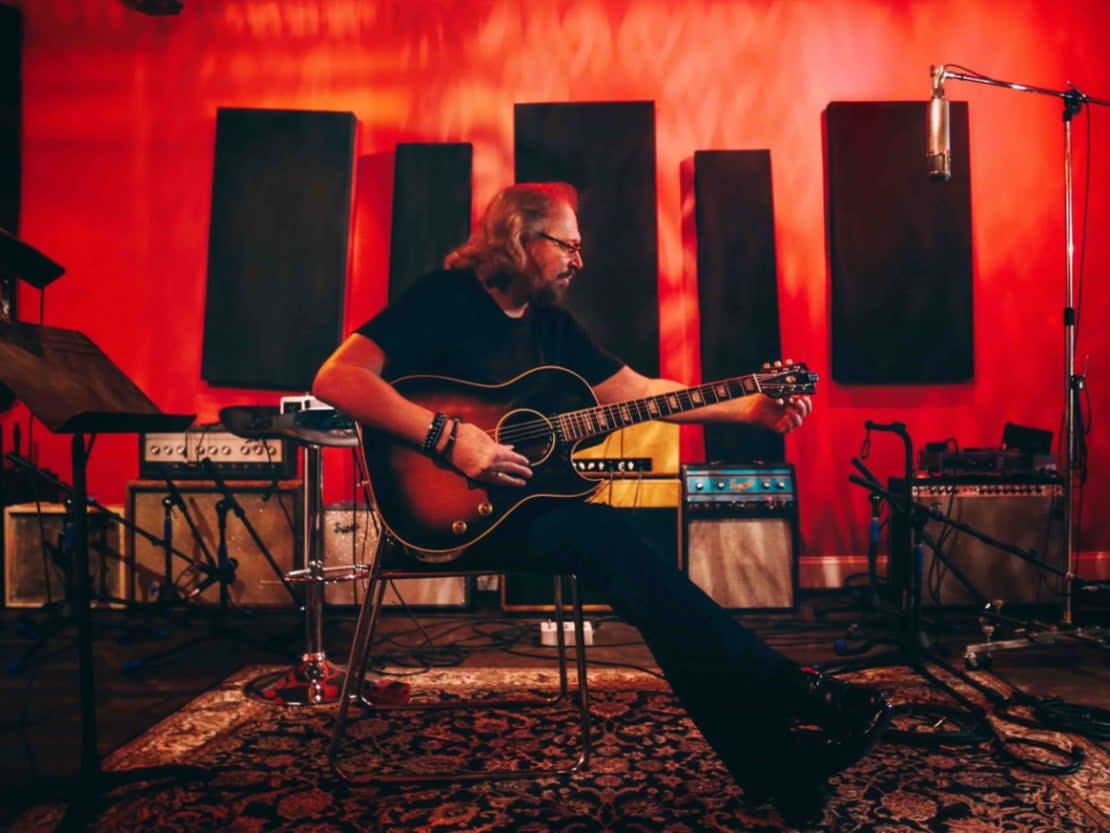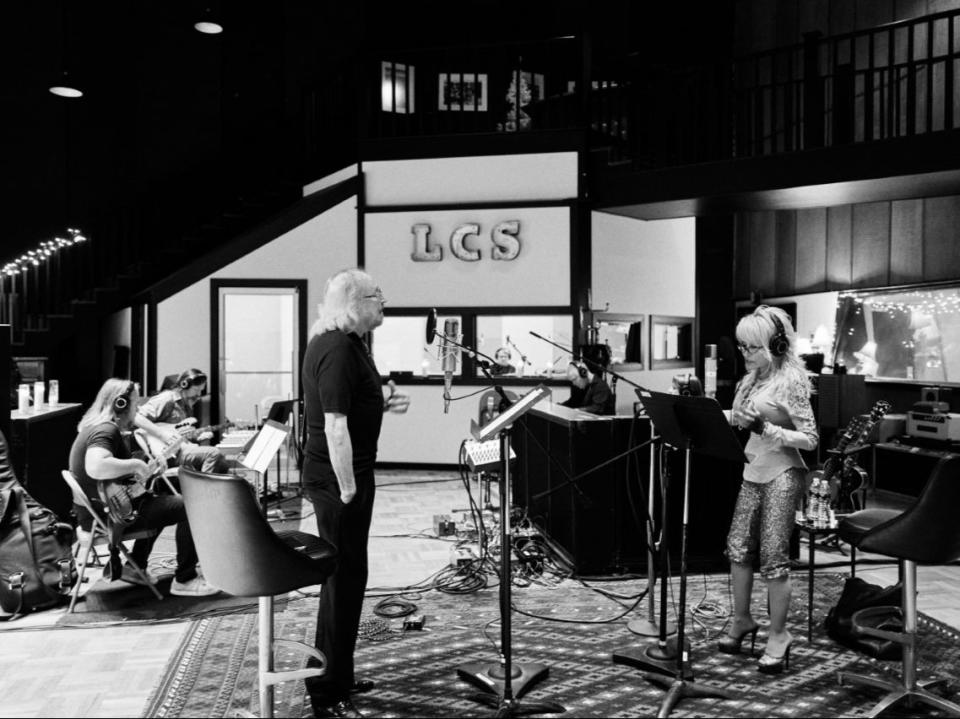Barry Gibb review, Greenfields – The Gibb Brothers’ Songbook Vol1: Comfy, countrified versions of Bee Gees hits

From the crotches of their white spandex jumpsuits to their phenomenal falsetto harmonies, everything about the Bee Gees in their late-Seventies disco pomp was ridiculously tight. Except for the Gibb Brothers’ relationship with each other, which was, famously, fractious. But as we all slump back into the athleisure of Lockdown II, it feels like the right time for Barry Gibb to deliver comfy, countrified versions of the Bee Gees hits we once dressed up for and went out to enjoy.
Greenfields is delivered in the shadow of loss. Barry's twin brothers Maurice and Robin Gibb are long gone. Maurice died (of complications from surgery) in 2003 and Robin (of cancer) in 2012, leaving blow-dried Barry to reflect alone on the band’s legacy in Frank Marshall’s smart, new documentary The Bee Gees: How Can You Mend A Broken Heart. While clarifying that disco was created mostly by and for black, gay and otherwise marginalised urban Americans, the film reminds us that the British-born, Aussie-bred brothers were country boys at heart. They enjoyed a rural childhood, were influenced early on by The Everly Brothers and Roy Orbison and wrote the hits for Saturday Night Fever in a run down French chateau set in nearly two hectares of parkland – about as far as you could get from the tense hustle of the Manhattan scene in which we saw John Travolta strut his stuff.
Barry, 74, has said he can’t watch the film because he can’t face losing his siblings all over again. But he’s very clearly at ease communing with them in song. And country feels like the perfect genre for this easy-going jalopy ride through some great old songs. In this first volume of his flip back through The Gibb Brothers’ Songbook, he’s joined at the mic by a galaxy of country stars, as Grammy-winning producer Dave Cobb soaks the starched whites of their classic chord changes in bittersweet sepia tones.

So Dolly Parton wraps loving lips around the sentimental, piano-backed “Words” (originally written for and rejected by Cliff Richard, later becoming the first Bee Gees single featuring only Barry’s vocal) and Alison Krauss pours the pure heart of bluegrass into “Too Much Heaven”. Little Big Town bring a little group swagger (and a restaurant serenader’s fiddle) to “Lonely Days”, while Sheryl Crow adds a companionable directness to “How Can You Mend a Broken Heart”. It’s remarkable to think that both those songs were written on the same afternoon in Barry Gibb’s west London basement flat. Gillian Welch makes a prettily picked holiday romance of “Butterfly” and Olivia newton-John is more rewardingly gutsy-throaty than you'd expect on “Rest Your Love On Me”. Keith Urban emotes his way through a swinging version of “A Message to You”, at home with the country melodrama of the man on death row’s final thoughts about the woman he loves and the rival he killed.
Ragged throated Rival Sons’ frontman Jay Buchanan takes up the gauntlet of both “To Love Somebody” (knowing nobody is going to touch the rich, angry ache of Nina Simone’s version) and a bluesy, organ-washed “Jive Talkin’”, which proves the album’s high watermark. You’d never guess the original rhythm was inspired by the chunka-chunka-chunka sound of a car rolling over a bridge crossing Biscayne Bay, near Barry’s Miami mansion. In both cases, Buchanan delivers the soul while keeping the toes tapping.
Each artist is joined at some point by Gibb’s distinctive high, breathy voice. It’s wobblier now, but sounds a little more searching and humble. There was, perhaps, something a little emotionally untrustworthy about the way the Bee Gees’ love songs once hit every beat and note with such cocky precision. And, perhaps, friction from their sibling rivalry made them sound more like competing line-spinners than genuine lovers. Perhaps that was also what gave them a staccato-strobing wattage, which is, inevitably, dimmer here.
After all the years of tightness and tension, it’s rather lovely to hear Gibb relax and give his old songs the elastic-waisted slack in which to breathe easy.
Read More
The 15 musicians to look out for in 2021
Barry Gibb explains why The Bee Gees never recorded a Christmas song

 Yahoo News
Yahoo News 
